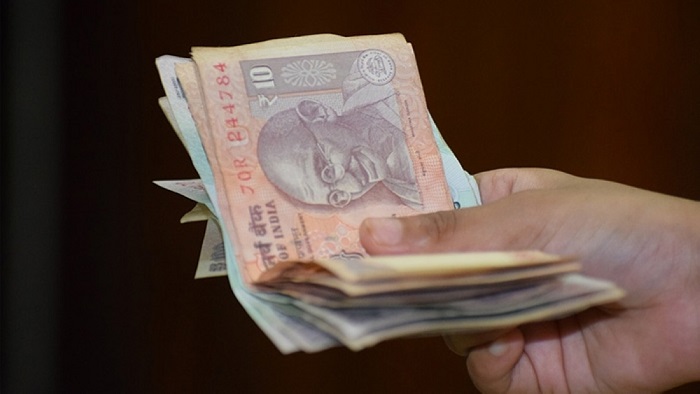
Muscat: The Indian Rupee (INR) hit a nine-month low hovering around INR187 against a single Omani Rial and is most likely to hit INR190 in future, according to experts.
The Indian currency, which gained strength and was trading against a single Omani Rial between INR 178 and 180 in July, has drastically depreciated and is now trading close to INR 187 per Rial.
“As of Wednesday, September 4, the currency has hit a nine-month low and is hovering around INR187 against a single Rial,” said P K Subudhi, the general manager at Mustafa Sultan Exchange.
Talking to Times of Oman, Subudhi said that he is predicting the currency to depreciate further and hit INR190 against the Rial considering the current situation.
“It is most likely going to depreciate and reach INR190 as the currency is under pressure. It is expected to weaken further in view of the turmoil all around,” Subudhi said.
According to official government GDP data, India is facing its worst growth slowdown in six years due to a slew of structural and cyclical factors.
The growth for the April-June quarter slumped to a low of 5 per cent on weak consumer demand but the government expressed hope because of the upcoming festive season in the country.
India’s stock market Sensex fell 850 points on Tuesday after the government GDP’s data was released. Even the rupee suffered a big loss against the US dollar and is now trading at a 10 month low.
The Sensex finished 2 per cent lower at 36,562 - its biggest one-day fall since October last year - while Nifty settled 2 per cent lower at 10,797. However, the Sensex rebounded and ended up gaining 162 points at the closing bell on Wednesday, 4 September.
A separate private sector survey indicated that expansion in the country’s manufacturing sector hit its slowest in 15 months in August. Tata Motors witnessed a 60.28 per cent dip in sales in one year, which is the highest in comparison to all other big manufacturers.
Tata Motors is followed by Japanese car manufacturer Honda, which faced a 51 per cent decline in sales. India’s biggest passenger vehicle manufacturer Maruti Suzuki comes next with a 36 per cent decline in sales in one year. Maruti Suzuki is followed by Mahindra (-25 per cent), Toyota (-24 per cent) and Hyundai (-9 per cent).
Among auto stocks, Tata Motors, Bosch, Motherson Sumi and Eicher Motors fell between 3 per cent and 4 per cent after top automakers reported a slump in August sales over the weekend. Another market heavyweight Reliance Industries fell over 3 per cent.
“A subdued demand sentiment due to poor freight availability, lower freight rates, and a general slowdown in the economy continued to hamper the commercial vehicle demand,” Girish Wagh, president (commercial vehicles), Tata Motors, said.
Wagh said Tata Motors would focus on retail, even as it continues to align production to demand. He said the company’s retail sales during the month were ahead of wholesales by almost 25 per cent.
“We are looking forward to a positive impact of the recently announced stimulus package by the government,” he said.
The overall volume at India’s top four truck manufacturers — Tata Motors, Ashok Leyland, Volvo Eicher, and Mahindra & Mahindra — fell 59.5 per cent to 31,067 units during the month, compared with the year-ago period. In desperation, truck makers are offering discounts up to Rs 9,00,000 on high-tonnage (above 49 tonnes) duty trucks. Ashok Leyland has reported a 70 per cent decline in sales in August.
Economists feel that the government is working on measures that cater to the supply-side of operations while demand creation has been grossly ignored, which is a concern as supply growth without demand is no good. India is also facing its worst unemployment slump and Indian Finance Minister Nirmala Sitharaman is said to be closely monitoring the situation and working at a solution to the supposed Indian economic meltdown.
The government has to also come up with measures to increase wage growth, which declined significantly due to certain policy reforms aimed at correcting macroeconomic imbalances.
The Indian Rupee (INR) has been sliding in its trade over the past six months against the US dollar and is now trading at INR 72.39 per dollar, its lowest position all year.